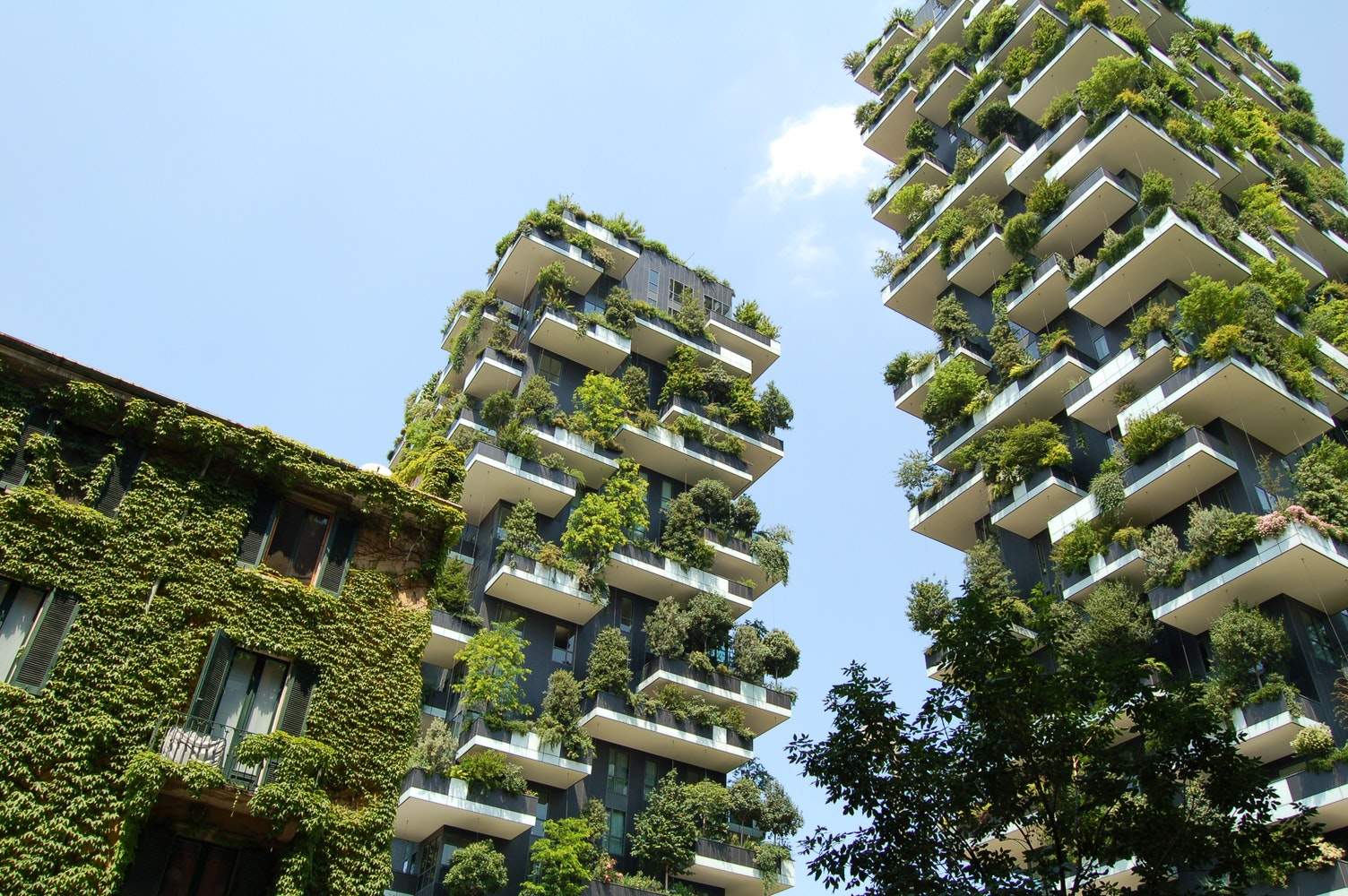
Driven by interest in sustainability, buildings with green facades have become increasingly popular among architects over the past few years. From palm trees on roofs to gardens spilling over balconies and densely forested facades, the renderings, often shared enthusiastically online, can be staggering to look at.
But walk past the tree and plant-studded buildings that emerge from the computer images, and you might be disappointed. “When you see the actual buildings two or three years later, it’s often just a black wall with a few things sticking out,” says Fedor Bron, senior project leader at architecture firm MVRDV. “The images are great but in reality they often don’t work.”
Image versus reality
There are various reasons for this mismatch, according to Bron. First is the financial cost. Putting trees and soil on buildings is expensive, with concrete and steel required to support the additional weight, automatic irrigation systems required to water the plants and gardeners needed to maintain them.
“You need to know how the building is going work,” says Bron. “Who is going to take care of the building and the plants? Will the residents do it themselves? How much is it going to cost and how much time will it take to care for them?”
When these questions are asked, developers often get cold feet, Bron adds. “Architects will work with developers to win a competition using a nice image but they don’t know what the economy will look like two or three years later,” he says.
“They don’t know how the client is going to react when the building is being built or what the project budget will be. When a developer wins a competition they have other things that are more important than a green facade.”
There are also major technical challenges, particularly when it comes to putting plants on skyscrapers. Conditions on the rooftops of tall buildings, for example, are usually not amenable to plant life.
“It’s hot, cold, windy, the rain lashes at you, and the snow and sleet pelt you at high velocity,” architecture writer Tim De Chant wrote on ArchDaily back in 2013. “Life for city trees is hard enough on the ground. I can’t imagine what it’s like at 500 feet, where nearly every climate variable is more extreme than at street level.”
Technical knowledge improves
The technical knowledge to produce such buildings has improved over the past few years, however, and projects are now coming to fruition.
“I think there was a time when the images were more important than what was actually buildable,” says Bron. “But I think now there is more knowledge and we have better advisors that know how it all works.”
Italian architect Stefano Boeri’s tree-covered Bosco Verticale in Milan, for example, won multiple recent awards including the 2014 High-rise Award and the 2015 Best Tall Building Worldwide from the Council on Tall Buildings and Urban Habitat.
Boeri now plans to build a ‘forest city’ in Liuzhou, China. “We have been asked to design an entire city where you don’t only have one tall building but you have 100 or 200 buildings of different sizes, all with trees and plants on the facades,” he told the Guardian. “We are working very seriously on designing all the different buildings. I think they will start to build at the end of this year. By 2020 we could imagine having the first forest city in China.”
In inner-city Eindhoven, MVRDV has been selected to design a new residential development which will feature greenhouses and slanting roofs covered with plants and grass.
“When we start an assignment instead of making a nice image we have people on board that know how these things work,” Bron explains. “They look at roofs to study what can grow on it, how it can be done sustainably, how much water it will need and the cost of maintenance. People with technical skills are now involved much earlier on to make sure what we show on the images can be fully realised.”
More than a pretty picture
For Bron, the motivation for designing plant-covered buildings goes far beyond aesthetics. Trees and plants can provide shading during summer months, for example, and can absorb CO2 to reduce pollution and improve air quality.
“By creating more greenery you have more oxygen and therefore a better environment,” Bron says. “You also have a better temperature in the house and in a country like ours with a lot of rain, a green roof can help slow down the rainfall. Our philosophy as an office is to create more on a roof that what a roof normally shows and that it’s not enough to have a good façade, we want to do something with it.”
Pulling this off will be challenging, however. While MVRDV’s project in Eindhoven has the full support of the municipality and client, Bron admits that designing a successful building covered in greenery will always be a “struggle and a fight”.



